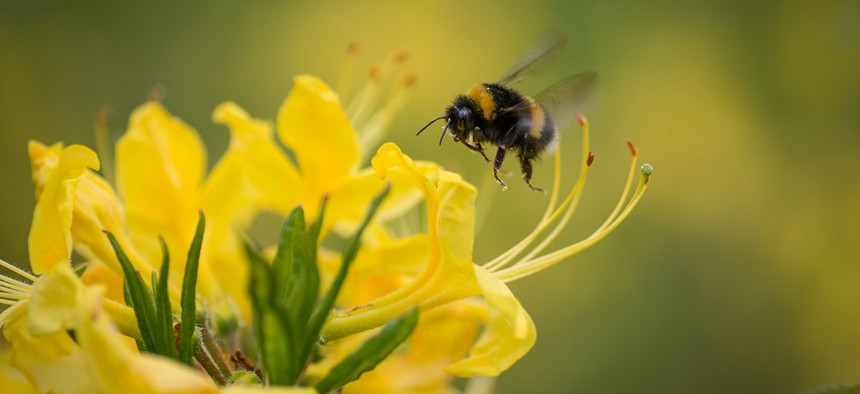These Tiny Drones Can Pollinate Plants So Bees Don’t Have To

Aleksandr Lopatchenko/Shutterstock.com
Bumblebees are currently listed as endangered in the U.S.
The humble bee has a lot of responsibility. In addition to producing millions of hundreds of millions of pounds honey every year, they’re also one of the many species of pollinators that help plants reproduce.
Bee colonies all over the world, though, are dying out, to the point where bumblebees been listed as endangered in the U.S. Scientists in Japan are working on a solution: tiny drones that can do some of the pollinating work we typically rely on bees for. In a study published Feb. 9 in the journal Chem, the researchers announced they’ve developed remote-controlled drones that buzz up to flowers and give them a fly-by kiss that can both collect and distribute pollen, much like bees do when they go to collect nectar.
In bees, pollen gets lodged in little hairs all over their bodies, and shaken off at each new plant. This pollen exchange in different parts of flowers is what allows the plants to form seeds. The drones though, rely on a gel researchers at the National Institute of Advanced Industrial Science and Technology in Japan accidentally created in a lab eight years ago.
Eijiro Miyako, a chemist at AIST and the lead author of the paper, had been trying to make liquid that could conduct electricity efficiently, and came up with a sticky gel that couldn’t do exactly what he was after, but did turn out to have some other interesting properties: After eight years in the lab, the sample was just as viscous as it was when it was created.
The researchers applied the gel to tiny drones about 1.5 inches long, outfitted with horsehairs arranged like a bee’s body hair. They flew the remote-controlled drone around a lab and into the flowers of some lily plants they had arranged for testing purposes. The drone could successfully pick up pollen from one flower and release it into another.
Right now, it’s not practical to let loose in the wild, as the drones require a human remote control. But the team hopes the drones could eventually be programmed to fly through fields and pollinate automatically using GPS and artificial intelligence. It’s unlikely the drones could ever replace bees entirely—and the little bots definitely can’t make honey—but they could at least help ease the global environmental burden causes by colony collapse disorder.


